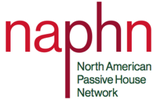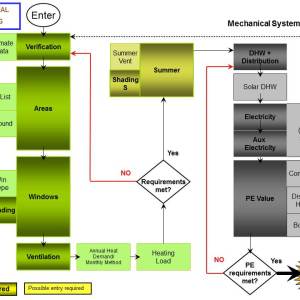The 7 Habits of Local, Highly Successful Passive House Organizations
By Bronwyn Barry
Over the past five years I’ve been fortunate to interact with a vast network of Passive House advocates from Austria, Germany, Italy, Spain, Hungary, England, Scotland, Ireland, Sweden, Denmark, Latvia, Slovakia, Estonia, Mexico, Canada and New Zealand. At home in California, I’ve worked to promote the PH concept both locally at Passive House California, and nationally here at the American Passive House Network, in coordination with NY Passive House, Passive House Northwest and Passive House New Mexico. In all of these interactions, locally, nationally and internationally, I’ve repeatedly heard the same two ‘cris de coeur’: 1. “We need more help,” and, 2. “Our buildings and codes are different/special/more complicated/(add problem) here.”
In an effort to partially address these cries, I offer the following anecdotal observations on how to be more effective with very few resources. These ideas evolved from many years working to build organizations that promote building efficiency. I’ve implemented many of them personally and taken others from observing successes in other groups and regions. I offer them here as a tool to sharpen your own particular strengths and abilities and welcome your feedback and responses.
Target achievable goals that require fewer resources and can be accomplished by small groups. States are large entities. Cities and regions are smaller and much more easily influenced. It is easier to get to know the key people who can affect policy changes at a local level. Successful examples of this approach are PlaNYC 2030, the Brussels Region and multiple cities and regions within Austria and Germany (Voralberg, Hesse, Frankfurt etc.)
Stimulate Demand: host tours, open houses and publicize the heck out of local projects. Competitions such as the APHN PHPP Dashboard competition and scholarships are also easy ways to stimulate interest. Think of these efforts as ‘investments’ in the future of your local organization. PHCA gave two scholarships to local builders to attend the first Tradesperson Training course. They are now teaching PH at local schools and community colleges.
Build Regional Competence, resources, expertise and connections: PH requires a team effort. Train and build your local ‘team’ and actively recruit missing collaborators (such as mechanical engineers.) Humans gravitate together to share success and failure. Build diverse organizations that provide opportunities for this to happen. This is why small US regional groups are thriving and started before any national US PH organizations. Local groups are more nimble and able to generate local climate and building typology adaptions for PH. They can also achieve item #1 more effectively.
Train Multi-family and Institutional architects first. Don’t start with single-family home builders and architects. Single-family is the hardest, most costly, least efficient building typology for PH and builds a case against Passivhaus because it is challenging. Outreach directly to multi-family, institutional and larger-scale developers, builders and designers. This is what the UK Passivhaus Trust did. They have leap-frogged the US in terms of volume of PH being planned and built.
Collaborate with local manufacturers. PH requires a full ‘eco-system’ for it to be successful and that includes product suppliers and manufacturers. Don’t treat them like ‘lepers’ – you need each other. Provide special workshops for specific products that you would like locally manufactured. (APHN Window Certification workshop is an example. PHI is now doing this workshop in other regions.)
Don’t waste time trying to establish an ‘Institute.’ We already have one – it’s called the PHI. Get over the idea of trying to build your own – it’s not efficient and is a waste of energy and resources trying to replicate, particularly when relatively inexperienced with Passive House. Austria and the UK built strong advocacy organizations that built certification and training capacity quickly, rather than diverting resources into an ‘Institute.’
Don’t waste time converting ‘nay-sayers.’ There are plenty of open-minded people who see the benefits of PH immediately. Spend time with them. They will in turn reach out to many more people than you can yourself. Do listen to those with valid skepticism and concern. Often their fears are based on incorrect information and by listening to them you can correct these misconceptions.
References:
Systems Thinking – Donella Meadows: “Thinking in Systems: A Primer.” And “Places to Intervene in a System.” http://center.sustainability.duke.edu/sites/default/files/documents/system_intervention.pdf
Bright-Spot Theory – Chip and Dan Heath: “Switch: How to change things when change is hard.” Review and synopsis: http://www.fastcompany.com/1514493/switch-dont-solve-problems-copy-success

